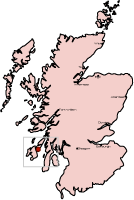Whisky for Everyone
- Home
- > Whisky regions
- > Scotland
- > Islands (Jura)
- >
- Jura
- > Islands (Jura)
- > Scotland
- > Whisky regions
Whisky regions
Did you know?
The name of Jura comes from the Nordic meaning 'deer island'. The name was given by the Vikings, who discovered the island and found thousands of the animals there. Deer still outnumber the 220 islanders by a ratio of 20 to 1
Jura
 Jura Distillery
Jura Distillery
Jura
Argyllshire
PA60 7XT
tel - +44(0)1496 820240
web - www.isleofjura.com
Through the Jura Distillery - available Monday to Saturday from May to September. Tours are free
Jura's story
The island of Jura is located off the west coast of Scotland. It is separated from the neighbouring island of Islay by a narrow and fast flowing stretch of water called the Sound of Islay. The island is home to the Jura distillery, one road that runs from north to south, one village (called Craighouse) and one pub. The present distillery is owned by Whyte & Mackay and underpins the local economy and environment, not just by suppling employment but also via whisky related tourism. Jura is a relatively large distillery considering the size of the island on which it is found, producing around 2 million litres per year. Much goes to the popular Whyte & Mackay blends, but they are actively promoting their single malts with resulting growth in sales and reputation. The whisky industry was an important part of Jura's culture, even before a legal distillery was built there. The island was a hotbed of illicit distilling, due to its remote location. A number of caves around the coast were used to house the stills and legend says that even when the excisemen did visit, the locals smuggled whisky to nearby Islay and the mainland by strapping containers of whisky to the underside of their cattle!
Jura's history
In 1810 a local man, Archibald Campbell, saw an opportunity to make some money from whisky and built a legal distillery in the village of Craighouse. The original name was the Small Isles Distillery which was a reference to the numerous small islands in Craighouse bay, that the new distillery overlooked. Small Isles produced a heavy, smoky whisky similar to those made on Islay and took its water from the dark, peaty Loch A-Bhaile Mhargaidh, which is 300m (1000 feet) above Craighouse. In 1875, the distillery was taken over by James Ferguson. He put together a rescue package as the distillery had been struggling for a number of years. By 1901 Small Isles had again fallen on hard times and following a rent dispute with the distillery's land owner, Ferguson decided to close down. He removed all the distilling equipment and even the roof to prevent his landlord from seizing them and selling them on so as to repay debts. The shell of the distillery lay derelict until 1960, when two local land owners decided to rebuild it. Robin Fletcher and Tony Riley-Smith combined their love of whisky and a concern for Jura's declining population (just over 100 people remained at that point) and production restarted in 1963. They renamed the distillery as Jura and produced a much lighter, fresher spirit than before. Current owners, Whyte & Mackay, decided to introduce a smokier whisky into the range in 2002, that was reminiscent of the old Small Isles whiskies.
This is called 'Superstition'.

- Jura 16 years old
- Slightly salty and smoky with dried fruit and a citrus note makes this a rounded, enjoyable and approachable whisky
- click for tasting notes

- Jura 18 years old
- Part maturation in sherry casks providing rich dried fruit charcteristics that combine with caramel, vanilla and almonds. A whiff of smoke and a touch of aniseed round off to make a very nice whisky
- click for tasting notes

